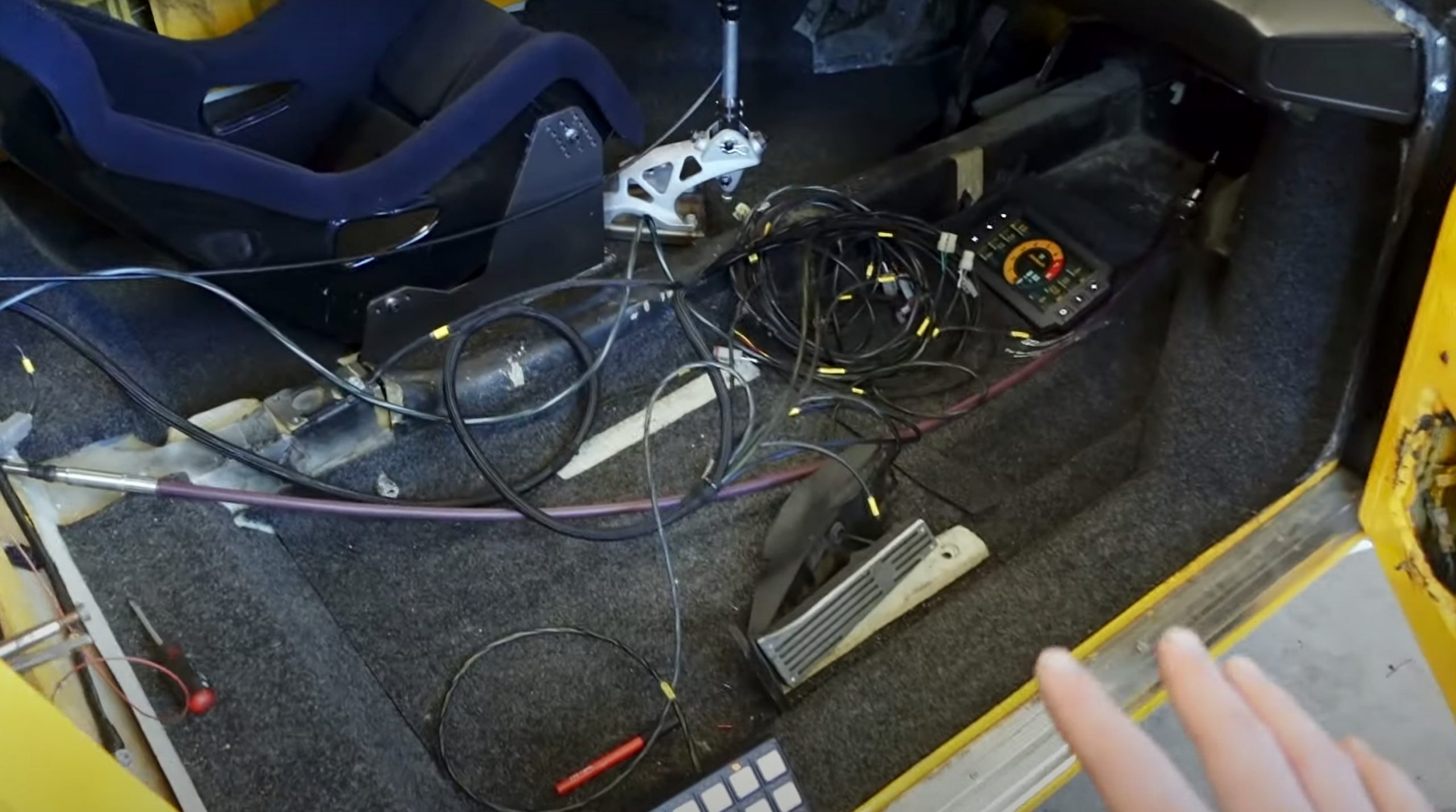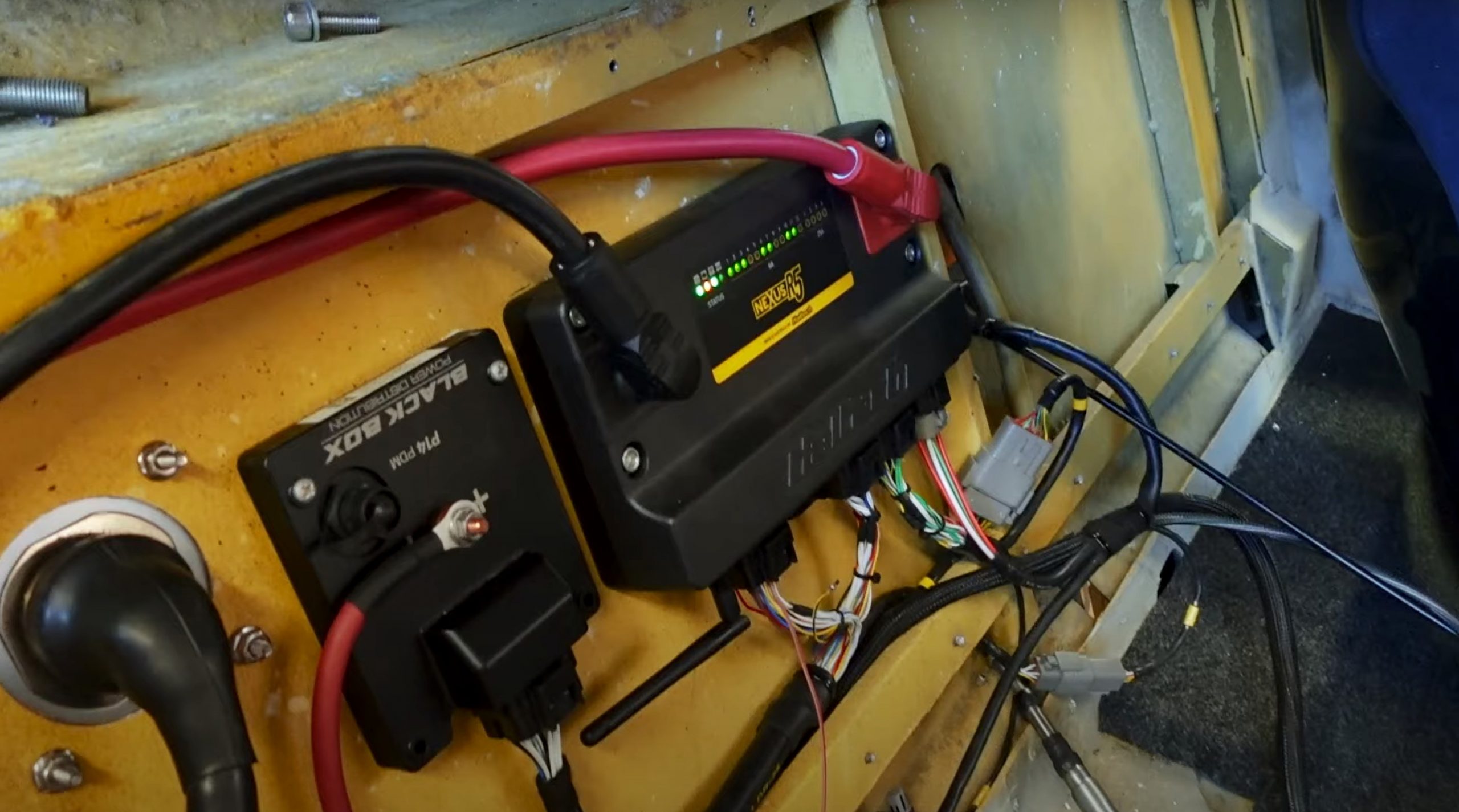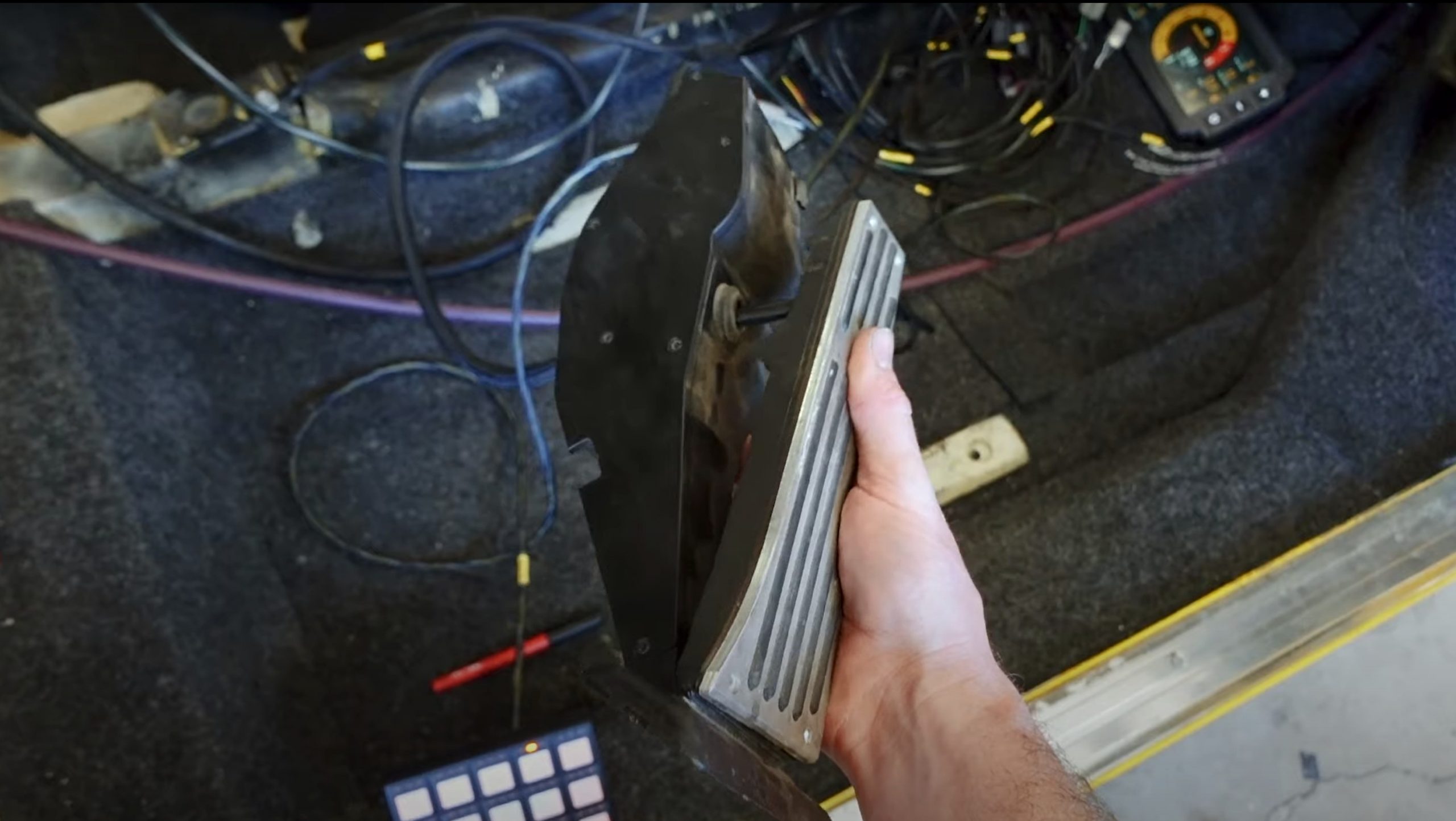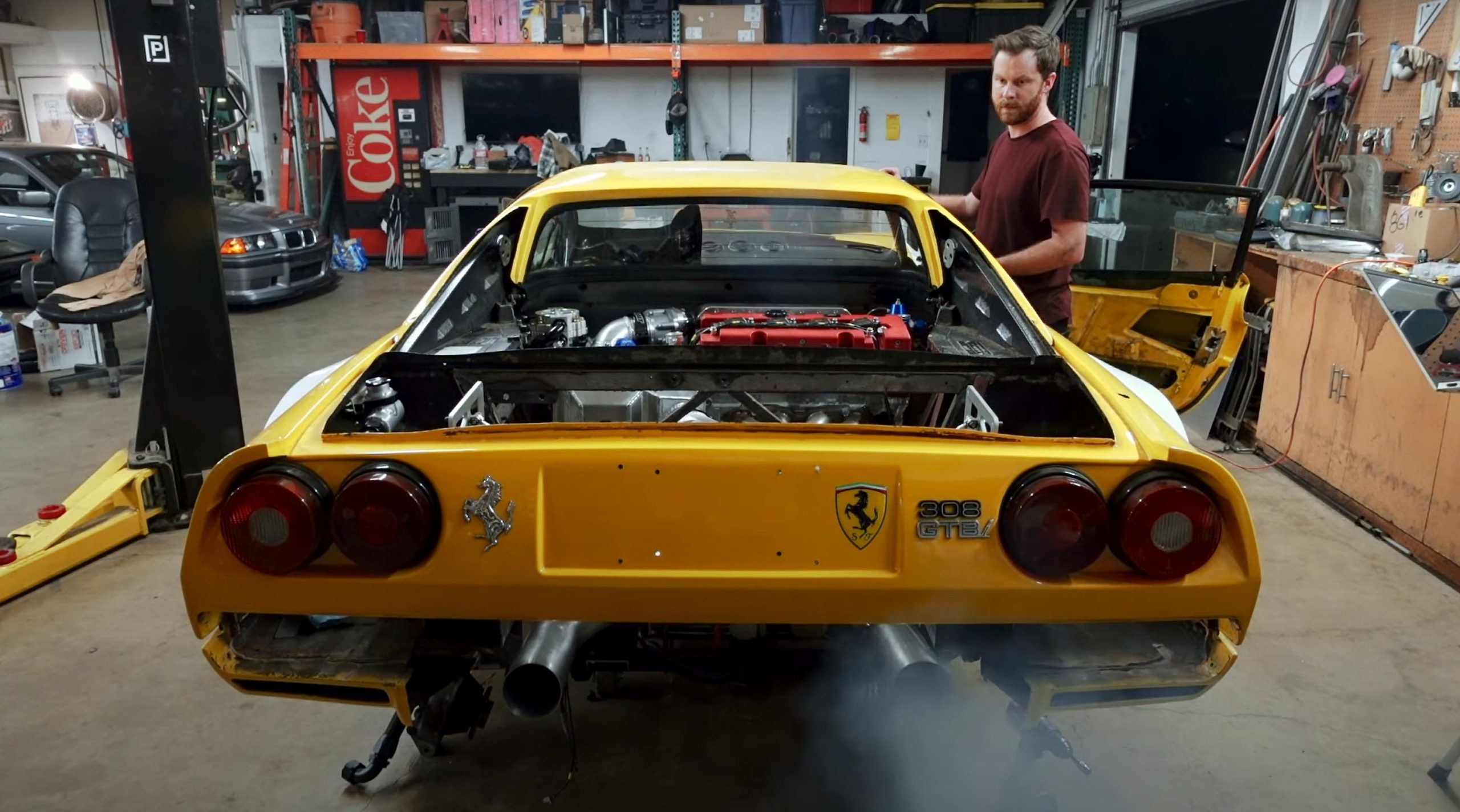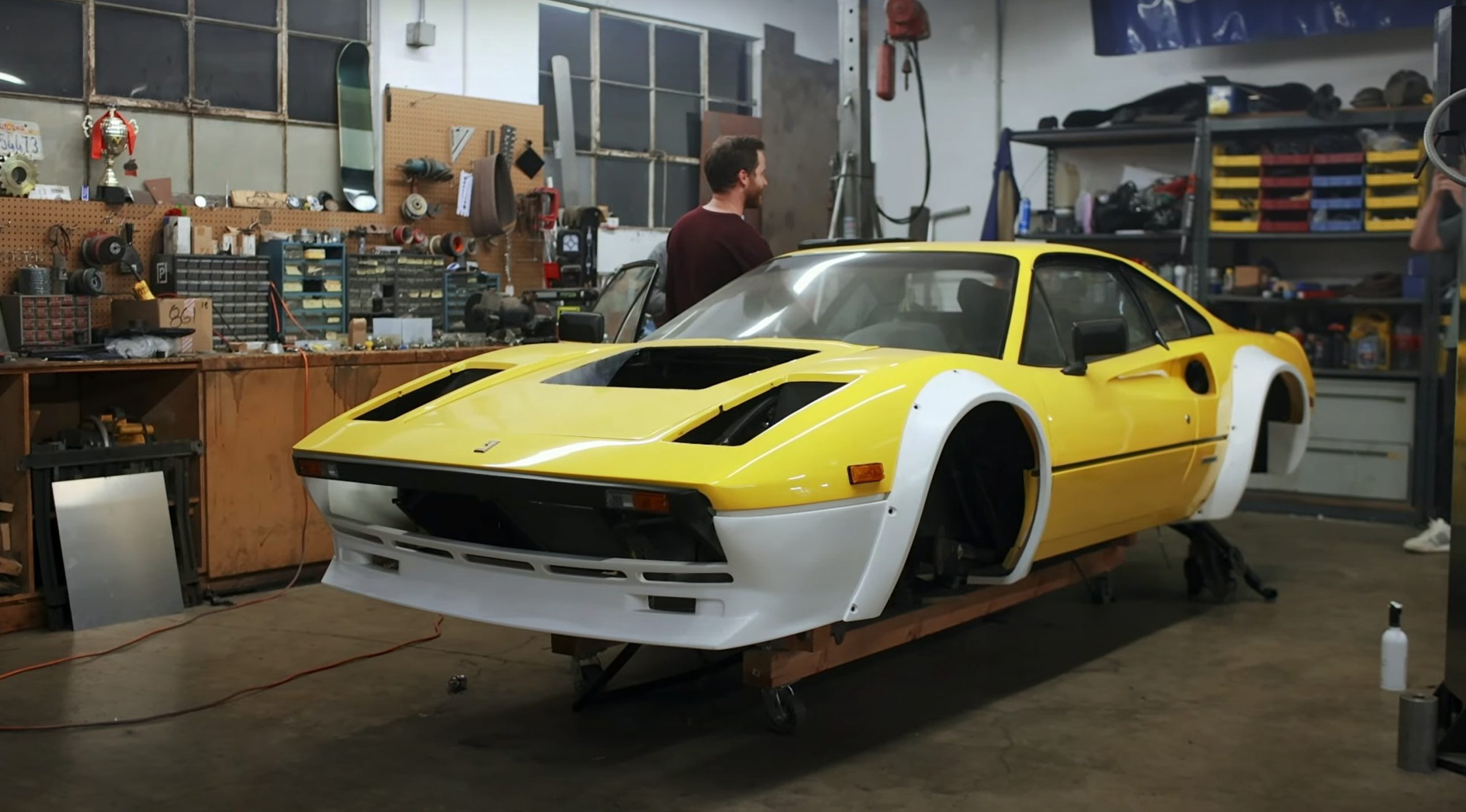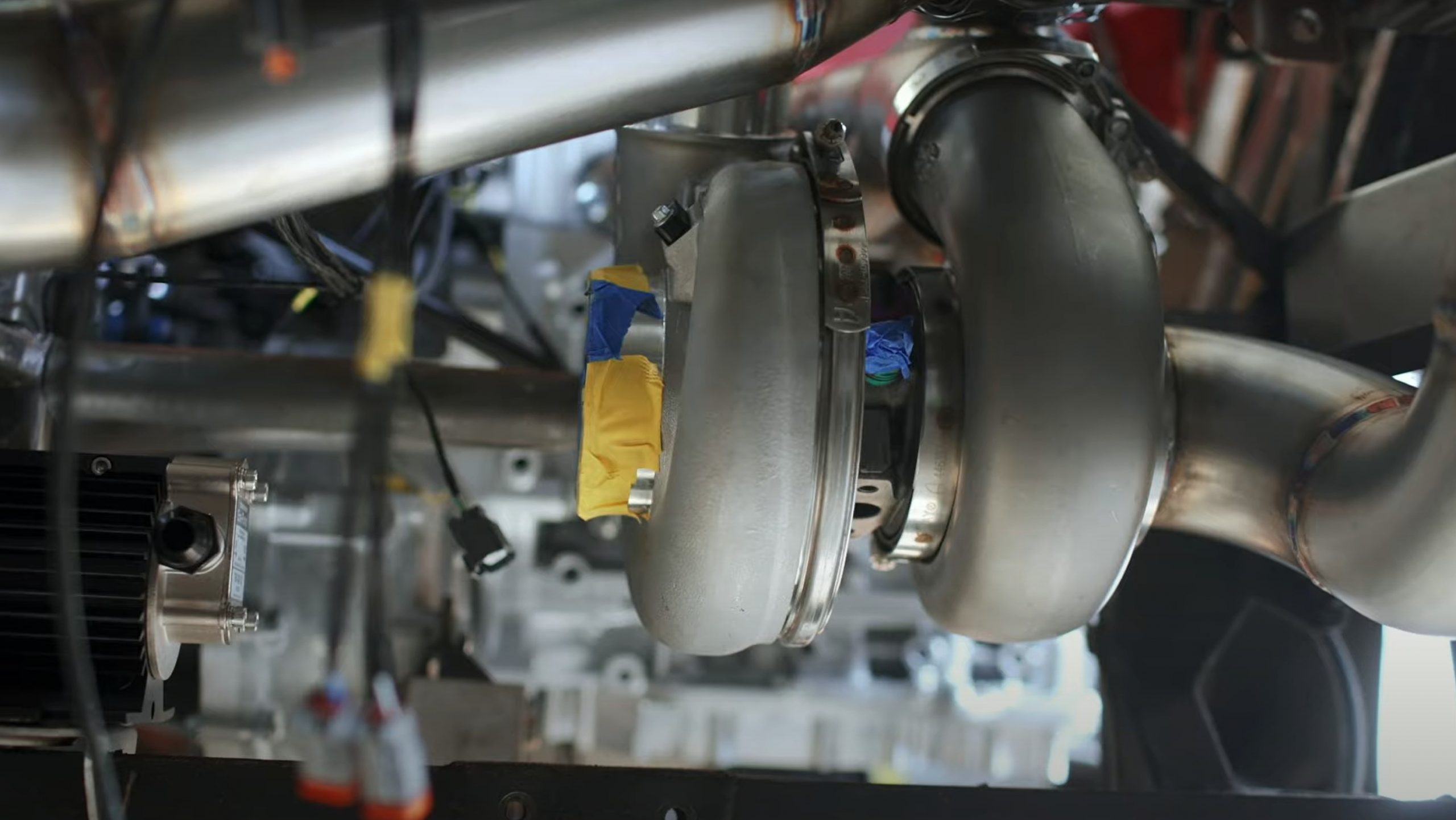Back in the mid-80s, Honda thought it could build a car that would be better than the equivalent Ferrari. And it succeeded, with the original NSX that landed in 1990 one-upping the Ferrari 328. Fast-forward to the present, an American enthusiast returns to the “Enzo Ferrari was wrong” script (these are his exact words) and is Honda-swapping a Ferrari 308, the predecessor of the 328.
The project kicked off in December 2020, when Mike Burroughs of Stanceworks sold his modded Hummer H1 and bought a Fly Yellow Ferrari 308GTBi with only 38,000 miles (61,000 km) on the odo.
The aficionado wasted no time in his quest to remove the Ferrari 2.9-liter V8 and replace it with a Honda K24 four-banger. And while this might appear as an attempt to set ferraristi on fire, the path he chose makes perfect sense (we’ll get to that in a moment).
Some 90 YouTube episodes later, the time has come for that 2.4L Honda motor, which has been gifted with a Garrett turbo capable of pushing things to 1,000 hp, to enjoy its first start (yay!).
Why would you K-swap a Ferrari?
Given the eight-cylinder factory spec of the 308 and the U.S. location of the project, one might wonder why Mike didn’t try to keep the Italian powertrain or choose a good ole LS swap instead.
Well, using the Ferrari V8 would push the costs to stratospheric levels, especially since the idea of the build it to become a time attack monster.
And, as some of you probably suspect by now, this won’t be a garage-SEMA-and-back build. Instead, Mike plans to compete in SCCA events, albeit while keeping the number plates—hey, getting back to the Enzo Ferrari point, at least the project sticks to Il Commendatore’s beloved motorsport arena.
In addition, this Ferrari V8 is hardly among the many engines that have built the stellar reputation of the Prancing Horse. Heck, in factory form, it makes about 200 hp, which also happens to be the top spec a Honda K24 can deliver before the aftermarket has its way with it.
As for the decision to stick with four cylinders, the turbocharged K24 seems like a briliant way to keep the scale footprint of this chronograph monster in check. After all, the standard car does weigh in at 3,132 lbs (1420 kg), with the original V8 accounting for 611 lbs (277 kg) of that.
Besides, this Honda K-Series is arguably the four-cylinder equivalent of the LS swap, which means it’s easy to build, even in such amazing spec, as well as seriously reliable.
And while some of those 90 Youtube clips focus on the details only fabricators and a handful of enthusiasts are interested in, others are destined for a broader audience.
It’s been a long and winding road
For one, the builder has had to go to great lengths—not unlike other projects currently being complete on YouTube—to install the transverse Honda heart in the mid-engined Fezza, which used to pack a longitudinal setup. And we’re not even referring to the interim Garrett turbo pushing the engine to 600 hp, but rather to the fact that he had to cut up the chassis while trying out various engine placements.
Returning to the present episode, there’s a Haltech Nexus RS5 ECU keeping everything in check and you’ll see Mike hand-operating the gas pedal on the first startup.
The 2.4L unit sounds like a riot, with the rough idle being the result of a VTEC delete. Why? Removing the meme-topic that is the Variable Valve Timing & Lift Electronic Control cuts weight and parasitic losses. Thus, you lose power down low and make more of it at the top, which is where this engine will be kept while racing.
You don’t see a Liberty Walk kit being tied for attention too often
Normally, a Liberty Walk widebody kit like the one present on this Maranello machine can easily take center stage.
However, given the sacrilegious mechanical side of this Fezza, the Japanese overfenders have no chance of doing that. And Mike hasn’t even gotten to installing the wheels or fitting the super-sized aero a time attack monster like this demands. So, we’ll see you on the other side of the wing.

